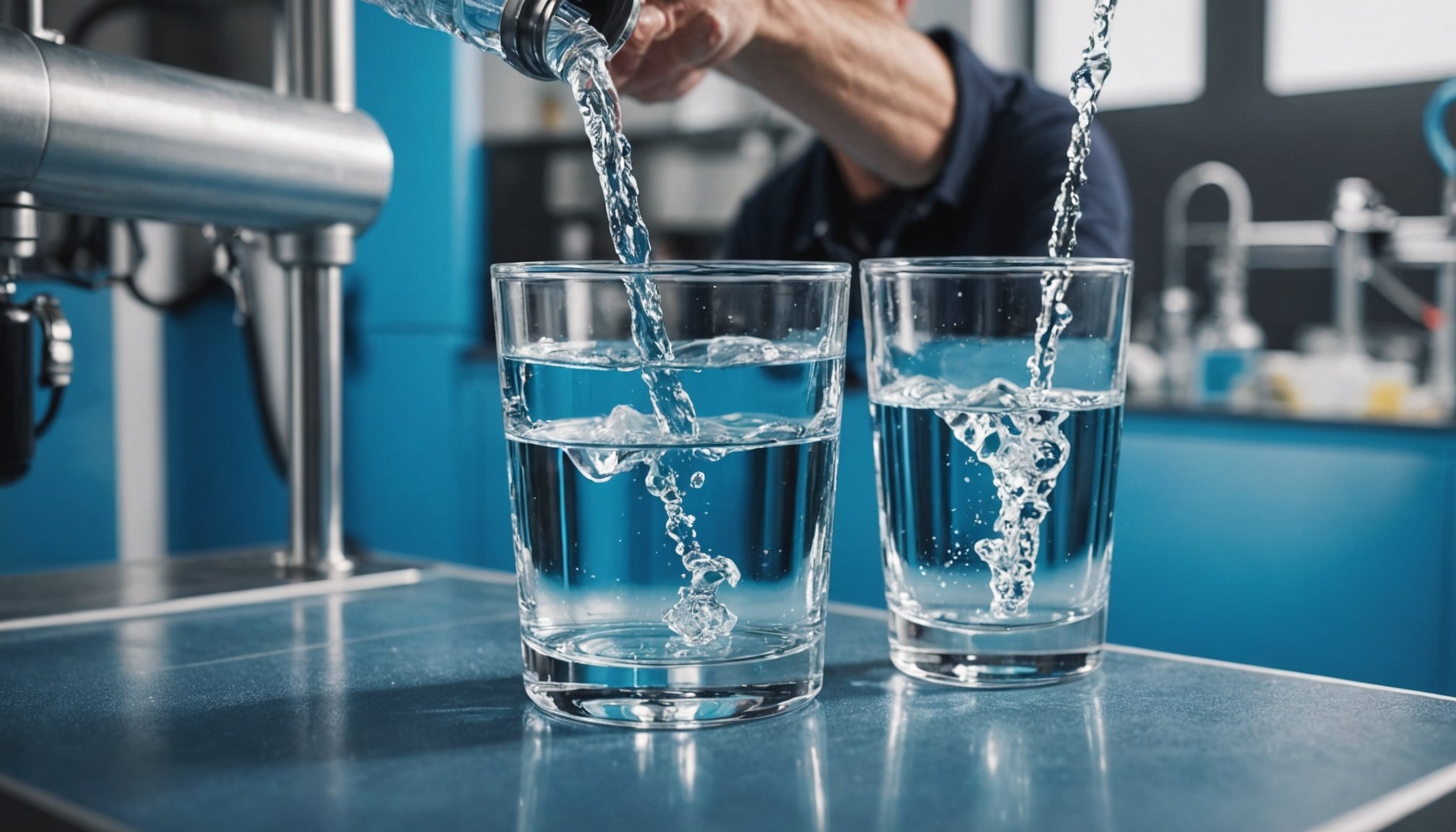Overview of Nanofiltration Technology
Nanofiltration is a filtration technology central to modern water purification efforts. By using semi-permeable membranes, it effectively removes dissolved solids and organic molecules, positioning itself between microfiltration and reverse osmosis in terms of performance.
Unlike reverse osmosis, nanofiltration allows certain ions to pass, making it ideal for softening water and retaining beneficial minerals. In comparison to microfiltration, it offers enhanced removal of smaller contaminants, making it versatile for both municipal and industrial applications.
Additional reading : Experience the thrill of the pokemon go mystery box today!
The importance of nanofiltration in contemporary water treatment solutions cannot be understated. It plays a crucial role in reducing water pollution, providing access to clean drinking water, and minimizing environmental impact. By removing a wider range of pollutants while retaining some essential nutrients, nanofiltration stands out in the realm of filtration technology for its efficiency and adaptability.
Understanding nanofiltration principles and its applications paves the way for innovations in clean water accessibility and sustainable practices. Its evolution alongside nanotechnology signifies an ongoing commitment to advancing water purification methodologies to meet the growing demands of global water resources. The balance of efficacy and energy use places nanofiltration at the forefront of sustainable filtration choices.
Topic to read : Inspiring product advertisement examples to elevate your brand
Advantages of Nanofiltration Over Traditional Methods
Nanofiltration offers several distinct advantages over traditional filtration methods like microfiltration and reverse osmosis, enhancing its appeal in modern water treatment benefits. One key advantage is its enhanced removal of contaminants. While microfiltration excels in filtering large particles, nanofiltration targets much smaller impurities, including specific organic molecules and ions, providing better contaminant control without the extensive energy demand of reverse osmosis.
Energy efficiency is another significant benefit that sets nanofiltration apart. Traditional methods, particularly reverse osmosis, often require high pressure and energy consumption. Nanofiltration operates at lower pressures, translating to reduced energy usage and lower operational costs, making it a more sustainable option for long-term applications.
From an environmental standpoint, nanofiltration minimises the use of chemicals in the process. Whereas previous technologies might necessitate additional chemical treatments to aid filtration, nanofiltration mandates fewer chemical dependencies, leading to a decrease in chemical waste production.
By reducing energy usage and chemical reliance, nanofiltration not only supports environmental protection but also ensures economically viable solutions for industries and municipalities alike. This combination of efficiency and sustainability highlights why nanofiltration is increasingly preferred in modern water treatment solutions.
Recent Innovations in Nanofiltration Technology
Nanofiltration continues to evolve with significant advancements in filtration innovations and technology development. Emerging materials, particularly those incorporating nanotechnology, have been pivotal in enhancing membrane performance. Researchers focus on developing membranes with improved permeability, selectivity, and fouling resistance. Such innovations promise more efficient and cost-effective solutions for diverse water purification needs.
Integration of nanofiltration with other purification processes represents another stride forward. Combining it with procedures like biological treatment or reverse osmosis can amplify water treatment efficacy, addressing various impurity levels. These hybrid systems leverage the strengths of each method, leading to superior contaminant removal.
Nanotechnology, at the core of these advancements, facilitates filtration innovations by enabling precise control over membrane characteristics. Innovations in membrane design and material engineering aim to increase lifespan and efficiency, reducing the system’s environmental footprint. As these technologies advance, the overall water purification process becomes increasingly sustainable and effective.
By continuously refining materials and technologies within nanofiltration, these significant advancements bring us closer to reaching optimal performance in diverse applications, meeting the ever-increasing demand for clean, safe water worldwide.
Applications of Nanofiltration in Various Industries
Nanofiltration has established itself as a key player in diverse industrial applications, particularly in industrial water treatment and agriculture. Its ability to effectively filter out small impurities makes it indispensable in municipal water supply systems. These systems benefit from its capacity to retain essential minerals while removing harmful pollutants, ensuring safe and clean drinking water for urban populations.
In the food and beverage industries, nanofiltration is valued for its precision in removing unwanted components without altering beneficial nutrients and flavours. This enhances product quality and taste, meeting stringent industry standards. The technology also helps in recovering valuable by-products, contributing to more sustainable production practices.
Moreover, the role of nanofiltration in agricultural irrigation and wastewater treatment is gaining traction. By purifying wastewater to safe levels, it provides a sustainable water source for agricultural needs, helping to conserve freshwater resources. This approach aids in maintaining soil health by reducing the load of harmful dissolved salts and contaminants.
The adaptability of nanofiltration across different sectors underscores its potential to address diverse water challenges, reinforcing its significance as an effective and sustainable filtration technology.
Case Studies Demonstrating Nanofiltration Efficacy
Nanofiltration case studies provide valuable insights into the practical application and effectiveness of this advanced filtration technology. Across various industries, the deployment of such systems has yielded success stories showcasing improved operational efficiency and water quality.
One notable project features a municipal water treatment facility that integrated nanofiltration to address issues with high dissolved salt content. The result was a significant improvement in water taste and quality, with reduced dependency on chemical additives. This case demonstrates how nanofiltration can effectively replace or augment existing systems, leading to better results while being environmentally friendly.
Another success story can be found in the dairy industry, where nanofiltration has been utilised to concentrate and recover valuable whey proteins. This application not only enhances production efficiency but also reduces waste, presenting a compelling case for the technology’s utility in resource recovery.
These practical applications highlight the potential for scalability and adoption of nanofiltration solutions across various sectors. The performance improvements noted in these cases underline the adaptability and efficacy of nanofiltration, providing valuable lessons for future implementations, and hint at a promising direction for broader industry adoption.
Nanofiltration and Sustainable Water Solutions
Nanofiltration plays a pivotal role in sustainable water purification, offering practical solutions that contribute to long-term environmental sustainability. Its ability to efficiently remove contaminants while conserving energy makes it an essential tool in managing global water resources effectively. By reducing reliance on chemical treatments, nanofiltration aligns with ecological objectives, minimising harmful waste outputs.
This filtration technology finds synergy with other sustainable practices, such as rainwater harvesting. The combination of these techniques can enhance water collection and purification processes, leading to a more comprehensive approach in addressing water scarcity. By utilising rainwater collection systems integrated with nanofiltration, communities can maximise water availability, improving water conservation efforts.
In the policy realm, the increased adoption of sustainable filtration methods like nanofiltration reflects a shift towards prioritising eco-friendly water management strategies. Governments and organisations worldwide recognise its potential in achieving sustainable development goals related to water security. The future of nanofiltration lies in its continuous integration into broader environmental policies and practices, encouraging efficient resource utilisation.
Nanofiltration’s role in sustainable water solutions demonstrates its importance in fostering a environmentally responsible future. It presents a viable path for societies to balance developmental needs with ecological preservation.
Expert Opinions and Future Outlook
Nanofiltration is increasingly discussed by experts as a pivotal innovation in water purification trends. Its ever-evolving filtration technology continues to draw attention from researchers and industry leaders alike. Experts highlight the myriad advantages of nanofiltration, noting its balance of efficiency and adaptability as highly promising.
Interviews with thought leaders in the field stress the technology’s transformative potential. According to Jill Cohen, a water treatment specialist, the future of nanofiltration lies in its integration with renewable energy. This could further enhance energy efficiency and sustainability, making water treatment more environmentally friendly.
Another exciting prediction from industry commentators involves the development of smarter, more responsive membranes incorporating AI-driven advancements. These could automatically adapt to varying impurity levels, optimizing performance.
However, the future poses challenges. Expanding the applicability of nanofiltration while maintaining cost-effectiveness is a paramount concern. Emerging markets require scaled solutions that balance water purification needs with economic constraints.
Finally, the incorporation of emerging technologies like blockchain is seen as a potential game-changer in tracking and optimizing water usage. As nanofiltration evolves, its role as a cornerstone of sustainable water management is being solidified by expert insights.










